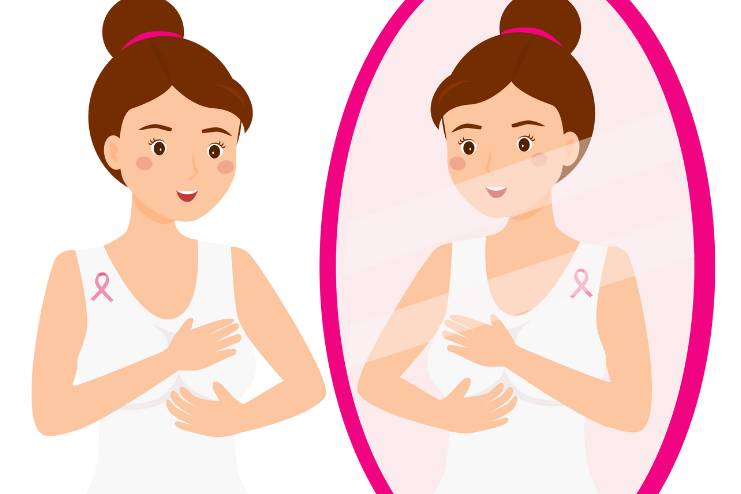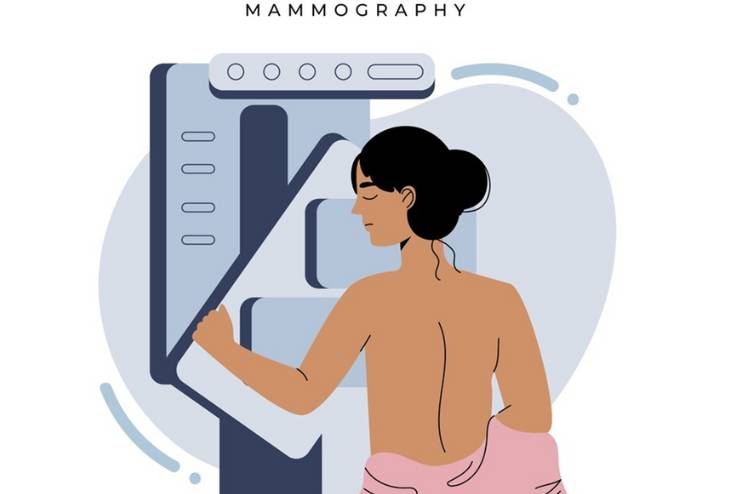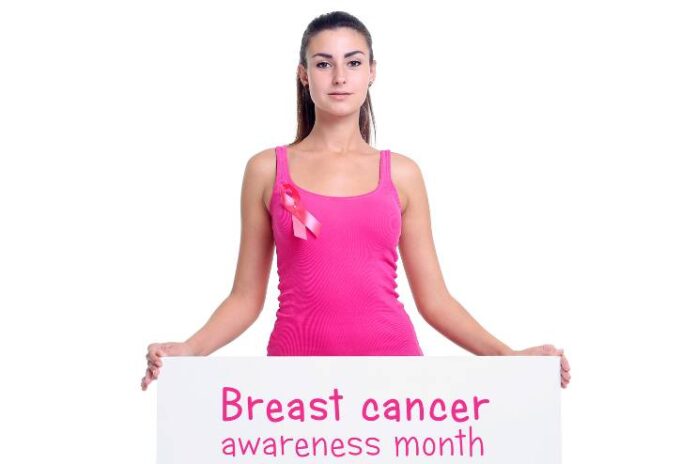Affiliate Disclaimer
Some links in this article are affiliate links. We may earn a small commission if you make a purchase through these links, at no extra cost to you. We only recommend products we find useful to our readersOctober is Breast Cancer Awareness Month, and we would like to highlight the importance of early detection. Breast cancer is a significant health concern, but early detection has remarkably enhanced survival rates and saved lives. Two methods for the early diagnosis of breast cancer are breast self-examination and screening mammograms.
Breast self-examination lets one understand their body, recognize abnormal changes, and seek medical advice early. Screening mammograms, however, are advanced imaging examinations that detect tumors even before they are palpable.
The combination of both these techniques thus becomes crucial for the early diagnosis of breast cancer so that treatment begins in time. Regular practice of breast self-exams and adhering to mammogram schedules save lives by preventing tumor growth.
Benefits of Early Detection
Breast cancer early detection benefits are numerous and influence treatment outcomes and survival rates. In most cases, early-stage breast cancer detection means cancer has just begun but has not yet started to spread. This results in less intensive modes of treatment. For instance, early-stage breast cancer can be treated through a lumpectomy instead of a mastectomy; furthermore, at this stage, patients can also avoid extensive chemotherapy or radiation therapy.
The survival rates for early-detected breast cancer are statistically high. According to the American Cancer Society, the five-year survival rate for localized breast cancer, cancer that hasn’t spread beyond the breast to other organs, is about 99%. However, if it has spread to regional lymph nodes, then the five-year survival rate drops to 86%, and even further to 30% if it has metastasized to distant parts of the body.
There are countless success stories resulting from early detection.. Many women who were diagnosed with the condition through routine screening mammograms have received prompt and effective treatment. Most of these women have recovered fully to resume normal lifestyles.
These stories are a clear indication of how early detection helps women take charge of their health and achieve the best results. Early awareness of signs and symptoms and regular screening programs are essential to take the required measures for breast cancer treatment at an early stage.
Understanding Breast Self-Exams

One of the most important and proactive steps to keep one’s breasts healthy and detect any problems is a breast self-examination. By performing regular breast self-examination, one can become familiar with how their breasts usually look and feel, making it easier to identify anything abnormal. This helps a person decide if they need to consult a healthcare provider.
A breast self-exam can be easily done by paying attention to visible changes in your breasts at home. Here’s a step-by-step process for conducting a breast self-exam:
- Look in the Mirror: Stand topless in front of a mirror with your arms at your sides. Look for any changes in breast shape, swelling, skin dimpling, or changes in the nipples. Raise your hands above your head, and check for these changes when your arms are in a raised position. Finally, place your hands on your hips, press firmly to flex your chest muscles, and observe again.
- Manual Examination While Standing: Using the pads of your three middle fingers, check each breast. Apply light pressure to feel the tissue closest to the surface, medium pressure to feel a little deeper, and firm pressure to feel the tissue closest to the chest. Move in a circular motion to cover the entire breast area, including the under-the-arm area and the area around the areola. Repeat on the other breast. This is often easiest to do in the shower.
- Manual Examination While Lying Down: Lie on your back, with a pillow supporting one shoulder and the corresponding arm behind your head. You will examine the breast and the area below the armpit using the same technique outlined in step 2 above, then repeat on the other side.
- Consistency Is Key: Self-checking for breast cancer is a straightforward process. Be familiar with your breasts and monitor any changes through a monthly breast self-exam. This is particularly recommended a few days after your menstrual period ends or on a consistent day each month if you’re postmenopausal. As most of the changes are not malignant, you will still have to report these unusual findings to your healthcare provider to allow for early detection.
The Role of Screening Mammograms

A screening mammogram is an X-ray image of the breasts used to detect breast cancer early, often before symptoms appear. Mammography requires the breast to be compressed between two plates, which helps to spread the breast tissue for precise imaging. While compression may cause mild pain, it only lasts a few seconds and is needed for accurate results. An average screening mammogram appointment takes about 20 minutes.
Healthcare guidelines recommend women 40 years and older should get screening mammograms once in 2 years. Anyone with higher risk factors, such as having a family history of breast cancer, would need to start screening earlier and more frequently.
The benefits of screening mammograms include early cancer detection and better treatment outcomes, saving thousands of lives. Regular mammograms are essential in the early detection of breast cancer, giving you the option of successful treatment and increasing your survival rates.
Early detection of breast cancer often means less aggressive treatments are needed, leading to fewer extensive surgeries, chemotherapy sessions, and radiation therapies.
Common Myths About Breast Cancer and Mammograms
Many myths and misconceptions circulate about breast cancer screening and lead to unnecessary fear and anxiety. Knowing the facts is important, and enables you to make the right choice about your health. Here are some of the most common mammogram myths:
Myth 1: A mammogram can cause breast cancer or spread it.
Fact: Mammograms are safe. They remain the gold standard for early breast cancer detection. Radiation exposure from a mammogram is minimal and not enough to cause cancer.
Myth 2: If you find a lump in your breast, you have breast cancer.
Fact: The majority of breast lumps are not malignant; that is, they are not cancer. However, it’s still important to have any new or unusual lumps or other changes checked by a doctor as soon as possible.
Myth 3: Breast self-exams do not work and just cause anxiety.
Fact: This is a common breast self-exam concern. While Breast Self-Exams (BSEs) alone are not effective in detecting most breast cancers, they help women know their breasts and recognize changes. A regular BSE, practiced in combination with professional screening, helps in early detection.
Myth 4: Only middle-aged or older women get breast cancer.
Fact: Breast cancer occurs in women of all ages, though the risk of getting it increases with age. Young women must also be “breast aware” and tell their healthcare provider if they have any concerns.
Myth 5: Men do not get breast cancer; it affects women only.
Fact: Men get breast cancer, too. While the percentage is less compared to women, men should also check themselves periodically by doing a breast self-exam while in the shower and reporting any changes to their physicians.
Among men, it is usually characterized by a hard lump underneath the nipple and areola. Men have a 19% higher mortality rate than women because of lower awareness, and men are less likely to assume a lump could be breast cancer, which leads to delayed treatment.
Discuss your breast cancer screening fears or concerns with your doctor. This way, you can reduce your anxiety, making it possible for you to get the best care. If breast cancer is detected early through regular screenings and awareness, that will be half the battle won.
Creating a Routine and Seeking Support

Breast health is important, and making a routine for regular self-exams and mammograms does make a difference.
- Develop a Monthly Self-Exam Habit: Perform your self-exam at the same time every month, preferably a few days after your menstrual cycle has ended when your breasts are least swollen. Feel all parts of your breasts and underarms in a systematic way for any lumps or unusual changes.
- Schedule Mammograms: Women aged 40 and above should discuss with their doctors the appropriate time for a mammogram. These mammograms should be done once every one or two years. Note these in a calendar, and never miss one of these appointments.
- Professional Guidance: In case of any changes or if one finds something unusual while performing a self-examination, promptly inform your doctor. They can reassure you, conduct further tests, and provide professional guidance on treatment.
- Access Support Systems: Engage with support groups for information and motivation. Many communities and organizations provide information and support resources for the screening and treatment of breast cancer. Support groups may give such a person emotional support, shared experiences, and valuable information.
- Keep Learning: Educate yourself regularly on breast health through trustworthy sources. Keeping yourself updated on new screening techniques and recommendations might help you be prepared to take the necessary steps toward your breast health.
It is not only good for your breasts, but it will also give you peace of mind. Regular breast exams, mammogram schedules, and a strong breast health support network will help you diagnose any potential breast health problem at an early stage and be properly managed.
Conclusion
Successful treatment and recovery from breast cancer heavily rely on awareness and early detection. Regular breast self-exams and timely mammograms are crucial for identifying potential issues early, when treatment is most effective. By incorporating these practices into your routine and staying informed, you can proactively manage your breast health.
Make sure to visit your doctor to create a personalized screening schedule tailored to your needs. Don’t wait for symptoms to appear; prioritize periodic checkups to stay in control of your health.
This Breast Cancer Awareness Month, take action by performing a breast self-exam and scheduling a mammogram if needed.
In this Article


















